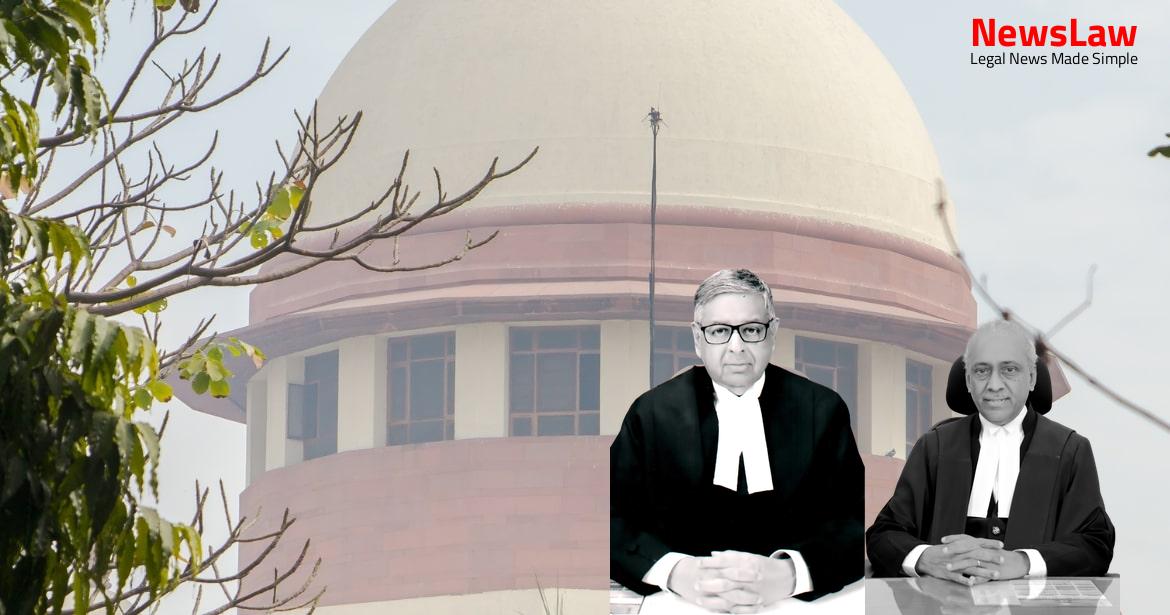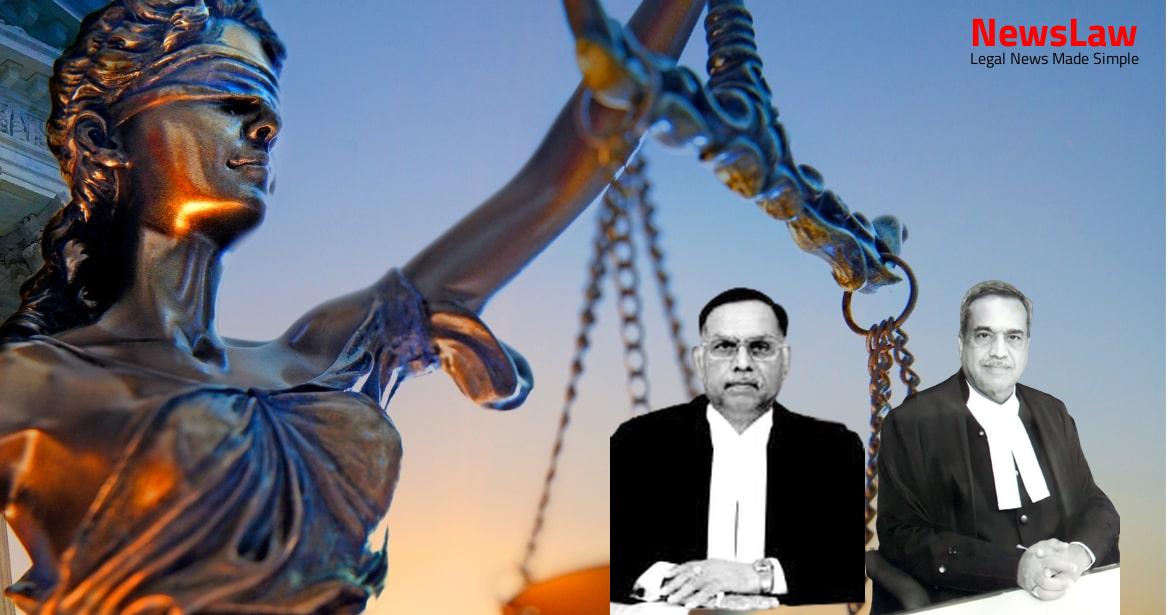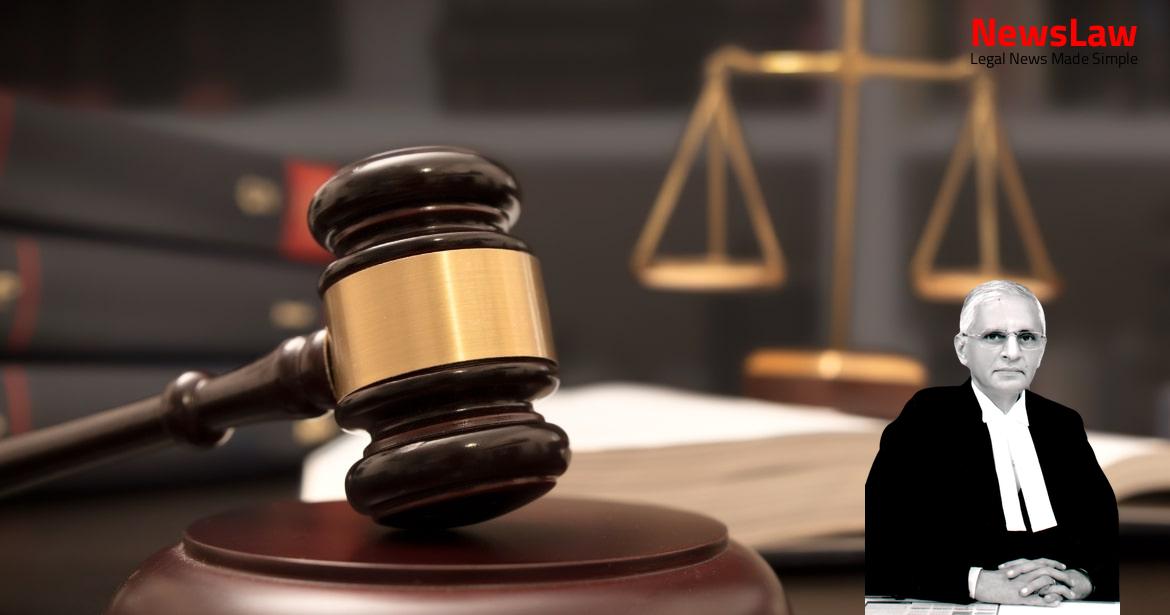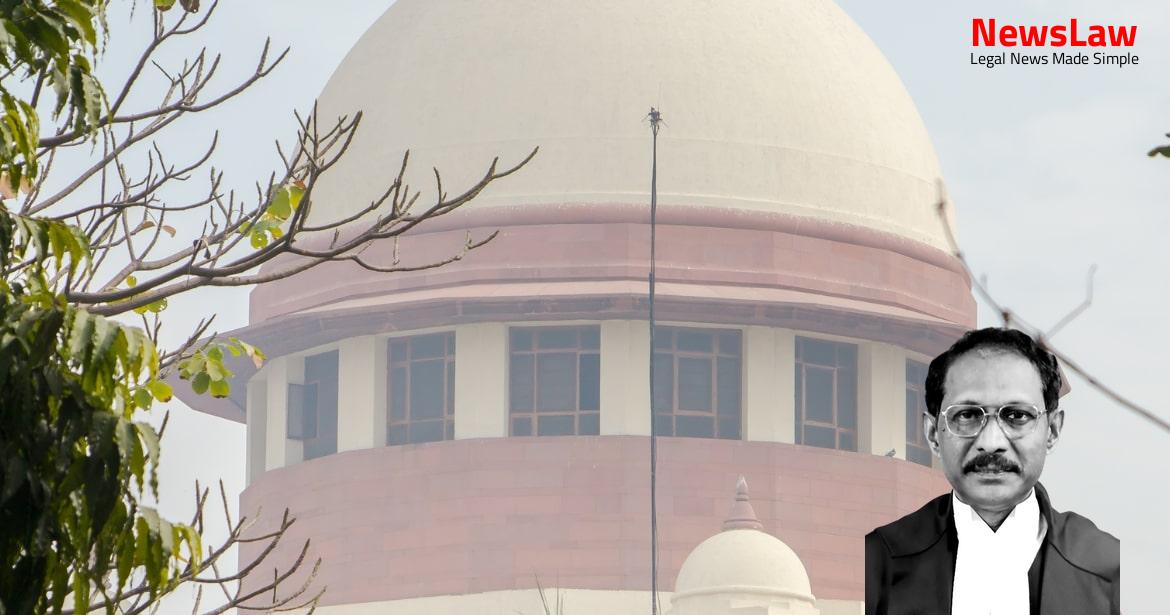In a landmark case before the Supreme Court Of India, a crucial interpretation was made regarding the jurisdiction and powers of the National Company Law Tribunal (NCLT). This case serves as a significant precedent for future legal proceedings involving NCLT decisions. Stay tuned to understand the intricate details of this ruling and its implications on corporate insolvency resolution processes.
Facts
- A notice for premature termination of the lease was issued on 09.08.2017.
- No order of termination had been passed until the initiation of the Corporate Insolvency Resolution Process (CIRP).
- Resolution Professional filed a Miscellaneous Application seeking to set aside the Government of Karnataka’s order and extend the lease validity till 31.03.2020.
- State of Karnataka raised objections regarding NCLT jurisdiction and alleged collusive initiation of resolution process.
- NCLT Chennai allowed the Miscellaneous Application, directing Karnataka to execute Supplemental Lease Deeds.
- Interim Resolution Professional informed Monitoring Committee and Mines & Geology Director about the CIRP commencement.
- Government of Karnataka challenged the NCLT order in the High Court through writ petitions.
- NCLT order was ex-parte as the State did not appear.
- Interim Resolution Professional filed a writ petition seeking the deemed extension of the lease under MMDR Act, 1957.
- Moratorium declared under IBC, 2016; Financial Creditor moved application for insolvency against the Corporate Debtor.
- NCLT Chennai admitted the application, commenced CIRP, and appointed an Interim Resolution Professional.
- Government of Karnataka rejected deemed extension proposal citing lease deed and mineral concession rule violations.
- Corporate Debtor withdrew the initial writ petition after the rejection, with liberty to file a fresh one.
- Resolution Professional conceded in High Court that NCLT order could be set aside for fresh consideration.
- High Court set aside NCLT order and remanded the matter back for fresh consideration.
- NCLT, Chennai allowed the Miscellaneous Application setting aside Government of Karnataka’s order.
- Tribunal directed Government of Karnataka to execute Supplement Lease Deeds in favor of Corporate Debtor.
- High Court granted stay of operation of Tribunal’s direction.
Issue
- The two seminal questions of importance in the case were identified as:
- The first question pertained to the interpretation of a specific legal provision.
- The second question involved the application of that provision to the facts of the case.
- These questions were deemed crucial for the resolution of the issue at hand.
Also Read: Jurisdictional Analysis in Transfer Petition
Arguments
- Attorney General contended that NCLT had the jurisdiction to investigate allegations of fraud under Section 60(5)(c) of the IBC, 2016.
- Resolution Professional has the right to preserve the property of the Corporate Debtor and can seek reliefs from NCLT for this purpose.
- IBC, 2016 is a unified code, and NCLT’s approval of the Resolution Plan is crucial for the revival of the Corporate Debtor.
- The High Court should not interfere with NCLT orders under Article 226 if an alternative remedy under IBC, 2016 is available.
- The Resolution Applicant argued that High Court’s interference could derail the time-bound resolution process mandated by IBC, 2016.
- Attorney General emphasized that lack of jurisdiction of NCLT would allow for High Court intervention under Article 226.
- The DRT Act, 1993 confines NCLT’s jurisdiction to contractual matters, not fraud or collusion allegations between Corporate Debtor and creditor.
- Attorney General referred to the decision in Barnard and Others vs National Dock Labour Board that when an inferior Tribunal issues a nullity Order, the superior Court does not need to direct the party to the appellate forum as per the Act.
- The Attorney General also cited the case of The State of Uttar Pradesh vs Mohammad Nooh in support of his argument.
Also Read: Petitioner v. Respondent: Specific Performance Suit Dismissed
Analysis
- The jurisdiction and powers of the High Court under Article 226 are delineated in Clause (1) of Article 226.
- The High Court’s jurisdiction for the exercise of such power is spelt out in both Clauses (1) and (2) of Article 226.
- The nature of the power exercised by the High Court is highlighted in Article 226(1).
- Civil courts are barred from entertaining suits or proceedings in matters under the jurisdiction of the NCLT or NCLAT as per the relevant provisions of the IBC.
- NCLT is granted powers under the IBC, 2016 to inquire into allegations of fraud, particularly related to the initiation of CIRP.
- The NCLT’s jurisdiction and powers are delineated in Section 60 of the IBC, 2016.
- The NCLT can exercise such powers only within the boundaries of the jurisdiction prescribed by the statute it administers.
- The statutory scheme of the IBC, 2016 clarifies the boundaries within which the resolution professional can act, especially in public law domain cases.
- Incidents of fraud and collusion during insolvency resolution can be investigated by the Adjudicating Authority under the IBC.
- The importance of distinguishing between lack of jurisdiction and wrongful exercise of jurisdiction is emphasized, particularly when invoking Article 226 bypassing statutory remedies.
- The distinction between jurisdiction under public law remedies like Article 226 and private law remedies is highlighted.
- The principle of judicial review in administrative actions is reemphasized in the context of NCLT’s authority and boundaries.
- In M.L. Sethi vs R.P. Kapur, K. K. Mathew, J., made interesting observations about Anisminic.
- Paripoornan, J. provided a list of Indian cases citing Anisminic with approval in Mafatlal Industries & Others vs. Union of India.
- Cases such as Sadhana Lodh vs National Insurance Co., Nivedita Sharma vs Cellular Operators Association of India, and Cicily Kallarackal vs Vehicle Factory applied the principle of availability of remedy under specific Acts to refuse High Courts’ supervisory jurisdiction.
- Union Bank of India vs Satyawati Tandon held that the availability of appeals under certain Acts should deter High Courts from exercising their Article 226 jurisdiction.
- Anisminic abolished the distinction between errors of law going to jurisdiction and errors of law that did not.
- An identical view to Anisminic was taken by a three-member bench of the Indian court four days before the House of Lords’ judgment in Anisminic, in the case Official Trustee, West Bengal & Others vs Sachindra Nath Chatterjee & Another.
- The decision in Official Trustee emphasized that for a court to have jurisdiction, it must not only have jurisdiction to try the suit but also the authority to pass the orders sought for.
- The concept of ‘limited government’ under India’s written Constitution allows for judicial review as an incident of limited government.
- Public law proceedings serve a different purpose than private law proceedings, as highlighted in Nilabati Behera @ Babita Behera vs State of Orissa.
- English courts traditionally maintained a distinction between cases where a jurisdiction was not vested in a statutory/quasi-judicial authority and cases where there was a wrongful exercise of available jurisdiction.
- Section 18 (f) (vi) outlines the duties of the interim resolution professional, which includes taking control and custody of assets owned by the corporate debtor.
- The assets subject to determination of ownership by a court or authority are to be taken control of by the interim resolution professional.
- Section 18 (f) (vi) specifies that assets subject to determination of ownership by a court or authority are to be under the interim resolution professional’s custody.
- Assets owned by a third party in possession of the corporate debtor under trust or contractual arrangements, assets of subsidiaries, and other assets notified by the Central Government are excluded from the definition of ‘assets’.
- The Central Government is responsible for constituting the National Company Law Tribunal (NCLT) under Section 408 of the Companies Act, 2013, which has powers conferred by the Companies Act and other laws.
- Section 410 of the Companies Act relates to the establishment of the National Company Law Appellate Tribunal (NCLAT) by the Central Government.
- NCLT and NCLAT have jurisdiction to inquire into questions of fraud.
- They do not have jurisdiction to adjudicate disputes under MMDR Act, 1957 and its rules, especially those involving decisions of statutory or quasi-judicial authorities.
- Such disputes can only be corrected through judicial review of administrative actions.
- Fraudulent initiation of CIRP is not a valid reason to bypass the alternative remedy of appeal provided in Section 61.
Decision
- The High Court was justified in entertaining the writ petition filed by Original Name.
- There is no reason to interfere with the decision of the High Court.
- The appeals have been dismissed.
- No costs have been ordered.
Case Title: M/S EMBASSY PROPERTY DEVELOPMENTS PVT. LTD. Vs. THE STATE OF KARNATAKA
Case Number: C.A. No.-009170-009170 / 2019



